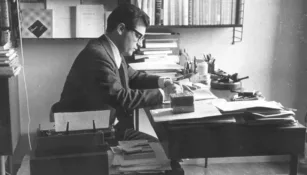EDITORIALE / Maria Vittoria Comacchi, Simone Guidi /
In its literal meaning, the term ἔκστασις (ekstasis) indicates a displacement, ‘being out of immobility’, and ultimately being outside oneself. To some extent, this term takes on a mystical connotation in late Antiquity, notably in book VI.9.11.24 of Plotinus’ Enneads, where ekstasis is described as a non-ordinary way of seeing. The notion of ecstasy, often inseparable from the concept of vision, would keep its mystical role, though altered in some ways, over the centuries, conceptualizing a specific kind of knowledge, which goes beyond the subject-object opposition, addressing the epistemological issues of perceiving and knowing the divine, and often challenging the nature of the self. This issue offers some attempts to track the constant reshaping and migration of the notions of ecstasy and intellectual or spiritual vision over the history of Western thought, unearthing their structural and constant persistence, from the Middle Ages to the contemporary ages, recurrently in many different non-ultimately-dialectical metaphysical systems. The papers in this volume provide some illustrative examples of the tangled history of the divergent meanings that the notions of ecstasy and vision have taken on, and their considerable reassessments and adaptations to constantly evolving conceptual frameworks, often redefining further notions such as those of rapture, prophecy, sleep, dream, and death.

